| Listing 1 - 10 of 13 | << page >> |
Sort by
|
Book
ISBN: 9780415775113 0415775116 9780203881361 0203881362 9781135974060 1135974063 1135974071 1282153048 9786612153044 9781135974022 9781135974077 9780415836456 Year: 2009 Publisher: London New York Routledge
Abstract | Keywords | Export | Availability | Bookmark
 Loading...
Loading...Choose an application
- Reference Manager
- EndNote
- RefWorks (Direct export to RefWorks)
Remembering Cosmopolitan Egypt examines the link between cosmopolitanism in Egypt, from the nineteenth century through to the mid-twentieth century, and colonialism. While it has been widely noted that such a relationship exists, the nature and impact of this dynamic is often overlooked. Taking a theoretical, literary and historical approach, the author argues that the notion of the cosmopolitan is inseparable from, and indebted to, its foundation in empire.Since the late 1970s a number of artistic works have appeared that represent the diversity of ethnic, national, and rel
Egypt --- Cairo (Egypt) --- Alexandria (Egypt) --- Kairo (Egypt) --- Kair (Egypt) --- Qāhirah (Egypt) --- Kahirah (Egypt) --- Caire (Egypt) --- Le Caire (Egypt) --- Ḳahir (Egypt) --- القاهرة (Egypt) --- al-Qāhirah (Egypt) --- القاهرة (مصر) --- al-Qāhirah (Miṣr) --- قاهرة (Egypt) --- O Caire (Egypt) --- Lo Cayiro (Egypt) --- Lo Quèro (Egypt) --- Каир (Egypt) --- Qahirä (Egypt) --- Горад Каір (Egypt) --- Horad Kair (Egypt) --- Каір (Egypt) --- Кайро (Egypt) --- El Caire (Egypt) --- Káhira (Egypt) --- Κάιρο (Egypt) --- El Cairo (Egypt) --- El Cairu (Egypt) --- Keiro (Egypt) --- Caireo (Egypt) --- O Cairo (Egypt) --- 카이로 (Egypt) --- Il Cairo (Egypt) --- קהיר (Egypt) --- Civilization --- Western influences.
Book
ISBN: 9774163907 1306492467 1617971707 161797451X 9781617974519 9781306492461 9789774163906 Year: 2011 Publisher: Cairo New York American University in Cairo Press
Abstract | Keywords | Export | Availability | Bookmark
 Loading...
Loading...Choose an application
- Reference Manager
- EndNote
- RefWorks (Direct export to RefWorks)
Unlike The Literary Atlas of Cairo, which focuses on the literary geopolitics of the cityscape, this companion volume immerses the reader in the complex network of socioeconomic and cultural lives in the city. The seven chapters first introduce the reader to representations of some of Cairo's prominent profiles, both political and cultural, and their impact on the city's literary geography, before presenting a spectrum of readings of the city by its multiethnic, multinational, and multilingual writers across class, gender, and generation. Daunting images of colonial school experiences and star
Cairo (Egypt) --- Social life and customs. --- In literature. --- Kairo (Egypt) --- Kair (Egypt) --- Qāhirah (Egypt) --- Kahirah (Egypt) --- Caire (Egypt) --- Le Caire (Egypt) --- Ḳahir (Egypt) --- القاهرة (Egypt) --- al-Qāhirah (Egypt) --- القاهرة (مصر) --- al-Qāhirah (Miṣr) --- قاهرة (Egypt) --- O Caire (Egypt) --- Lo Cayiro (Egypt) --- Lo Quèro (Egypt) --- Каир (Egypt) --- Qahirä (Egypt) --- Горад Каір (Egypt) --- Horad Kair (Egypt) --- Каір (Egypt) --- Кайро (Egypt) --- El Caire (Egypt) --- Káhira (Egypt) --- Κάιρο (Egypt) --- El Cairo (Egypt) --- El Cairu (Egypt) --- Keiro (Egypt) --- Caireo (Egypt) --- O Cairo (Egypt) --- 카이로 (Egypt) --- Il Cairo (Egypt) --- קהיר (Egypt)
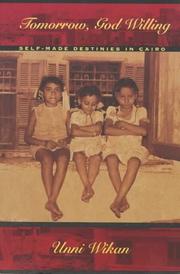
ISBN: 0226898350 0226898342 Year: 1996 Publisher: Chicago University of Chicago press
Abstract | Keywords | Export | Availability | Bookmark
 Loading...
Loading...Choose an application
- Reference Manager
- EndNote
- RefWorks (Direct export to RefWorks)
#SBIB:39A77 --- #SBIB:39A11 --- Etnografie: Noord-Afrika en het Midden-Oosten --- Antropologie : socio-politieke structuren en relaties --- Poor --- Disadvantaged, Economically --- Economically disadvantaged --- Impoverished people --- Low-income people --- Pauperism --- Poor, The --- Poor people --- Persons --- Social classes --- Poverty --- Economic conditions --- Cairo (Egypt) --- Kairo (Egypt) --- Kair (Egypt) --- Qāhirah (Egypt) --- Kahirah (Egypt) --- Caire (Egypt) --- Le Caire (Egypt) --- Ḳahir (Egypt) --- القاهرة (Egypt) --- al-Qāhirah (Egypt) --- القاهرة (مصر) --- al-Qāhirah (Miṣr) --- قاهرة (Egypt) --- O Caire (Egypt) --- Lo Cayiro (Egypt) --- Lo Quèro (Egypt) --- Каир (Egypt) --- Qahirä (Egypt) --- Горад Каір (Egypt) --- Horad Kair (Egypt) --- Каір (Egypt) --- Кайро (Egypt) --- El Caire (Egypt) --- Káhira (Egypt) --- Κάιρο (Egypt) --- El Cairo (Egypt) --- El Cairu (Egypt) --- Keiro (Egypt) --- Caireo (Egypt) --- O Cairo (Egypt) --- 카이로 (Egypt) --- Il Cairo (Egypt) --- קהיר (Egypt) --- Social conditions.
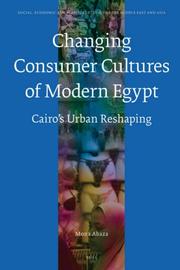
ISBN: 9004152776 9786611400224 128140022X 9047410475 9789047410478 9781281400222 9789004152779 Year: 2006 Publisher: Leiden Boston Brill
Abstract | Keywords | Export | Availability | Bookmark
 Loading...
Loading...Choose an application
- Reference Manager
- EndNote
- RefWorks (Direct export to RefWorks)
This book consists of a collage of images that attempts to convey the transformation of consumer culture and how it is related to the urban reshaping of the city of Cairo to meet with the demands of globalisation. Analyzing the shift from socialist economy to the opening up of Egypt's economy, and how this has affected everyday life of the middle classes, the author touches on various themes such as the general changing lifestyles and conspicuous consumption, the spread of mobile phones, and coffee shops, the gated communities and secondary resorts. The "folklorisation of culture" through the flowering tourist industry, the expansion of local crafts, plastic surgery and the body as a site of consumption are all analysed. Although being influenced by the discourse of the Frankfurt school on the culture industry, this work attempts to highlight the paradoxes pertaining to the democratising effects of consumer culture without denying the growing flagrant class polarisation.
Consumer behavior --- Consumers --- Lifestyles --- Attitudes. --- Cairo (Egypt) --- Social conditions. --- Economic conditions. --- Customers (Consumers) --- Shoppers --- Behavior, Consumer --- Buyer behavior --- Decision making, Consumer --- Life style --- Life styles --- Styles, Life --- Kairo (Egypt) --- Kair (Egypt) --- Qāhirah (Egypt) --- Kahirah (Egypt) --- Caire (Egypt) --- Le Caire (Egypt) --- Ḳahir (Egypt) --- القاهرة (Egypt) --- al-Qāhirah (Egypt) --- القاهرة (مصر) --- al-Qāhirah (Miṣr) --- قاهرة (Egypt) --- O Caire (Egypt) --- Lo Cayiro (Egypt) --- Lo Quèro (Egypt) --- Каир (Egypt) --- Qahirä (Egypt) --- Горад Каір (Egypt) --- Horad Kair (Egypt) --- Каір (Egypt) --- Кайро (Egypt) --- El Caire (Egypt) --- Káhira (Egypt) --- Κάιρο (Egypt) --- El Cairo (Egypt) --- El Cairu (Egypt) --- Keiro (Egypt) --- Caireo (Egypt) --- O Cairo (Egypt) --- 카이로 (Egypt) --- Il Cairo (Egypt) --- קהיר (Egypt) --- Persons --- Human behavior --- Consumer profiling --- Market surveys --- Manners and customs
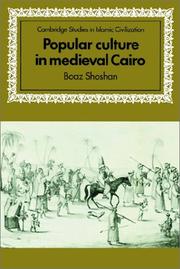
ISBN: 9780521432092 9780511524004 9780521894296 0511524005 052143209X 0521894298 9780521894298 Year: 2002 Publisher: New York : Cambridge University Press,
Abstract | Keywords | Export | Availability | Bookmark
 Loading...
Loading...Choose an application
- Reference Manager
- EndNote
- RefWorks (Direct export to RefWorks)
This is the first book-length study of popular culture in Islamic society, drawing together a wealth of Arabic sources to explore literature, religious celebrations and annual festivities in medieval Cairo and addressing questions of relevance throughout the Islamic world and beyond. Dr Shoshan examines popular religion against the background of the growing influence of Sufism, discussing the sermons of Abn Ata Allah, a leading Cairene Sufi, which shed considerable light on the beliefs of ordinary Muslims. The author then analyses the importance of a biography of Muhammad, which has been attributed to Abu'l-Hasan al-Bakri and suppressed by the learned, and traces the origins and popular practices of the annual Nawruz festival. Finally he explores the political beliefs and economic expectations of the Cairene commoners and demonstrates the complex relationship between the culture of the Cairene elite and that of the people.
Islamic civilization. --- Manners and customs. --- Alltag, Brauchtum. --- Cairo (Egypt) --- Egypt --- Social life and customs. --- Le Caire (Égypte) --- Islamic civilization --- Civilization, Islamic --- Muslim civilization --- Civilization --- Civilization, Arab --- Kairo (Egypt) --- Kair (Egypt) --- Qāhirah (Egypt) --- Kahirah (Egypt) --- Caire (Egypt) --- Le Caire (Egypt) --- Ḳahir (Egypt) --- القاهرة (Egypt) --- al-Qāhirah (Egypt) --- القاهرة (مصر) --- al-Qāhirah (Miṣr) --- قاهرة (Egypt) --- O Caire (Egypt) --- Lo Cayiro (Egypt) --- Lo Quèro (Egypt) --- Каир (Egypt) --- Qahirä (Egypt) --- Горад Каір (Egypt) --- Horad Kair (Egypt) --- Каір (Egypt) --- Кайро (Egypt) --- El Caire (Egypt) --- Káhira (Egypt) --- Κάιρο (Egypt) --- El Cairo (Egypt) --- El Cairu (Egypt) --- Keiro (Egypt) --- Caireo (Egypt) --- O Cairo (Egypt) --- 카이로 (Egypt) --- Il Cairo (Egypt) --- קהיר (Egypt) --- Manners and customs --- Culture populaire --- Moeurs et coutumes --- Arts and Humanities --- History
Book
ISBN: 0815651708 9780815651703 9780815632931 0815632932 Year: 2012 Publisher: Syracuse, N.Y. Syracuse University Press
Abstract | Keywords | Export | Availability | Bookmark
 Loading...
Loading...Choose an application
- Reference Manager
- EndNote
- RefWorks (Direct export to RefWorks)
Households --- Harems --- Mamelukes --- Women --- Population --- Families --- Home economics --- Harem --- Polygyny --- Human females --- Wimmin --- Woman --- Womon --- Womyn --- Females --- Human beings --- Femininity --- Mamluks --- History --- Social conditions --- Cairo (Egypt) --- Kairo (Egypt) --- Kair (Egypt) --- Qāhirah (Egypt) --- Kahirah (Egypt) --- Caire (Egypt) --- Le Caire (Egypt) --- Ḳahir (Egypt) --- القاهرة (Egypt) --- al-Qāhirah (Egypt) --- القاهرة (مصر) --- al-Qāhirah (Miṣr) --- قاهرة (Egypt) --- O Caire (Egypt) --- Lo Cayiro (Egypt) --- Lo Quèro (Egypt) --- Каир (Egypt) --- Qahirä (Egypt) --- Горад Каір (Egypt) --- Horad Kair (Egypt) --- Каір (Egypt) --- Кайро (Egypt) --- El Caire (Egypt) --- Káhira (Egypt) --- Κάιρο (Egypt) --- El Cairo (Egypt) --- El Cairu (Egypt) --- Keiro (Egypt) --- Caireo (Egypt) --- O Cairo (Egypt) --- 카이로 (Egypt) --- Il Cairo (Egypt) --- קהיר (Egypt) --- Social life and customs
Book
ISBN: 1283270544 9786613270542 9004206469 9789004206465 9781283270540 9789004194724 900419472X Year: 2011 Publisher: Leiden Boston Brill
Abstract | Keywords | Export | Availability | Bookmark
 Loading...
Loading...Choose an application
- Reference Manager
- EndNote
- RefWorks (Direct export to RefWorks)
This is a pioneering study which analyzes the food cultures of medieval Cairenes on the basis of a large corpus of historical texts in Arabic. Individual chapters discuss what, why, and how the inhabitants of medieval Cairo ate what they did, and in which ways food shaped their everyday lives. Given the complex nature of “food” and “foodways” as areas of research, the book covers such diverse subjects as the genesis of the culinary culture of Egypt’s capital and various practices related to food and eating. This monograph also considers several relevant social, political and economic circumstances in medieval Cairo, studying food culture in its broader context.
Diet --- Dinners and dining --- Food habits --- Table etiquette --- Dining etiquette --- Dining room etiquette --- Restaurant etiquette --- Etiquette --- Banquets --- Dining --- Eating --- Meals --- Caterers and catering --- Entertaining --- Cooking --- Gastronomy --- Menus --- Table --- Health --- Food --- Nutrition --- Food customs --- Foodways --- Human beings --- Habit --- Manners and customs --- Oral habits --- History. --- Religious aspects --- Islam --- Cairo (Egypt) --- Egypt --- Kairo (Egypt) --- Kair (Egypt) --- Qāhirah (Egypt) --- Kahirah (Egypt) --- Caire (Egypt) --- Le Caire (Egypt) --- Ḳahir (Egypt) --- القاهرة (Egypt) --- al-Qāhirah (Egypt) --- القاهرة (مصر) --- al-Qāhirah (Miṣr) --- قاهرة (Egypt) --- O Caire (Egypt) --- Lo Cayiro (Egypt) --- Lo Quèro (Egypt) --- Каир (Egypt) --- Qahirä (Egypt) --- Горад Каір (Egypt) --- Horad Kair (Egypt) --- Каір (Egypt) --- Кайро (Egypt) --- El Caire (Egypt) --- Káhira (Egypt) --- Κάιρο (Egypt) --- El Cairo (Egypt) --- El Cairu (Egypt) --- Keiro (Egypt) --- Caireo (Egypt) --- O Cairo (Egypt) --- 카이로 (Egypt) --- Il Cairo (Egypt) --- קהיר (Egypt) --- Civilization. --- History
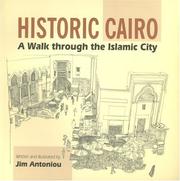
ISBN: 1417523123 9781417523122 9774244974 9789774244971 Year: 1998 Publisher: Cairo, Egypt American University in Cairo Press
Abstract | Keywords | Export | Availability | Bookmark
 Loading...
Loading...Choose an application
- Reference Manager
- EndNote
- RefWorks (Direct export to RefWorks)
Historic sites --- Islamic antiquities --- Walking --- History & Archaeology --- Regions & Countries - Africa --- Pedestrianism --- Aerobic exercises --- Animal locomotion --- Athletics --- Human locomotion --- Antiquities, Islamic --- Antiquities, Muslim --- Muslim antiquities --- Antiquities --- Heritage places, Historic --- Heritage sites, Historic --- Historic heritage places --- Historic heritage sites --- Historic places --- Historical sites --- Places, Historic --- Sites, Historic --- Archaeology --- History --- Historic buildings --- Monuments --- World Heritage areas --- Cairo (Egypt) --- Kairo (Egypt) --- Kair (Egypt) --- Qāhirah (Egypt) --- Kahirah (Egypt) --- Caire (Egypt) --- Le Caire (Egypt) --- Ḳahir (Egypt) --- القاهرة (Egypt) --- al-Qāhirah (Egypt) --- القاهرة (مصر) --- al-Qāhirah (Miṣr) --- قاهرة (Egypt) --- O Caire (Egypt) --- Lo Cayiro (Egypt) --- Lo Quèro (Egypt) --- Каир (Egypt) --- Qahirä (Egypt) --- Горад Каір (Egypt) --- Horad Kair (Egypt) --- Каір (Egypt) --- Кайро (Egypt) --- El Caire (Egypt) --- Káhira (Egypt) --- Κάιρο (Egypt) --- El Cairo (Egypt) --- El Cairu (Egypt) --- Keiro (Egypt) --- Caireo (Egypt) --- O Cairo (Egypt) --- 카이로 (Egypt) --- Il Cairo (Egypt) --- קהיר (Egypt)
Book

ISBN: 9782708409415 2708409417 2917902809 Year: 2017 Publisher: Paris : Publications de l’Institut national d’histoire de l’art,
Abstract | Keywords | Export | Availability | Bookmark
 Loading...
Loading...Choose an application
- Reference Manager
- EndNote
- RefWorks (Direct export to RefWorks)
Depuis la grande expédition d’Égypte qui marqua les esprits, seuls des voyageurs aussi célèbres que Maxime Du Camp et Gustave Flaubert sont restés dans les mémoires, alors que d’autres sont complètement oubliés ou connus des seuls spécialistes. Pourtant, leurs travaux restent des sources irremplaçables sur une ville en grande partie disparue. En effet, tout au long du XIXe siècle, beaucoup de monuments périrent faute d’entretien et à partir des années 1870, le khédive Ismaïl entreprit des travaux d’embellissement pour donner à la capitale de l’Égypte un aspect européen, aux prix d’importantes démolitions. Tous ces voyageurs, architectes, peintres, « antiquaires » furent subjugués par l’architecture médiévale du Caire et par le décor géométrique de ses bâtiments civils et religieux. Ils tentèrent à travers leurs dessins, photographies et relevés de faire connaître ces richesses artistiques que certains prévoyaient de publier dans des recueils, dont quelques-uns virent le jour. Ce livre a pour vocation de sortir de l’ombre ces passionnés qui offrent encore aujourd’hui des témoignages uniques assortis souvent de descriptions de dessins, de photographies ou d’écrits théoriques en règle générale peu accessibles. Un ensemble de spécialistes met ici en valeur ces documents tombés dans l’oubli et présente des synthèses de leurs œuvres et de leurs apports à la connaissance du Caire médiéval. La présente version numérique est revue et corrigée par rapport à la version publiée en 2013 aux éditions Picard.
Architecture --- Islamic architecture --- Orientalism in art --- Architecture islamique --- Orientalisme dans l'art --- History --- Pictorial works --- Histoire --- Ouvrages illustrés --- Cairo (Egypt) --- Le Caire (Egypte) --- Le Caire (Egypte) dans l'art --- Buildings, structures, etc --- In art --- Constructions --- Ouvrages illustrés --- Pictorial works. --- Buildings, structures, etc. --- In art. --- Orientalism in art. --- Arab architecture --- Architecture, Arab --- Architecture, Islamic --- Architecture, Moorish --- Architecture, Muslim --- Architecture, Saracenic --- Moorish architecture --- Muslim architecture --- Saracenic architecture --- Religious architecture --- Architecture, Primitive --- Architecture, Western (Western countries) --- Building design --- Buildings --- Construction --- Western architecture (Western countries) --- Art --- Building --- Design and construction --- Kairo (Egypt) --- Kair (Egypt) --- Qāhirah (Egypt) --- Kahirah (Egypt) --- Caire (Egypt) --- Le Caire (Egypt) --- Ḳahir (Egypt) --- القاهرة (Egypt) --- al-Qāhirah (Egypt) --- القاهرة (مصر) --- al-Qāhirah (Miṣr) --- قاهرة (Egypt) --- O Caire (Egypt) --- Lo Cayiro (Egypt) --- Lo Quèro (Egypt) --- Каир (Egypt) --- Qahirä (Egypt) --- Горад Каір (Egypt) --- Horad Kair (Egypt) --- Каір (Egypt) --- Кайро (Egypt) --- El Caire (Egypt) --- Káhira (Egypt) --- Κάιρο (Egypt) --- El Cairo (Egypt) --- El Cairu (Egypt) --- Keiro (Egypt) --- Caireo (Egypt) --- O Cairo (Egypt) --- 카이로 (Egypt) --- Il Cairo (Egypt) --- קהיר (Egypt) --- islamic architecture --- islamic art --- drawing --- Middle Ages --- photography
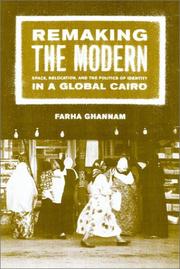
ISBN: 0520230469 0520230450 0520936019 1597345121 1282762559 9786612762550 1597348597 9780520936010 9781597348591 9780520230453 9780520230460 Year: 2002 Publisher: Berkeley University of California Press
Abstract | Keywords | Export | Availability | Bookmark
 Loading...
Loading...Choose an application
- Reference Manager
- EndNote
- RefWorks (Direct export to RefWorks)
In an effort to restyle Cairo into a global capital that would meet the demands of tourists and investors and to achieve President Anwar Sadat's goal to modernize the housing conditions of the urban poor, the Egyptian government relocated residents from what was deemed valuable real estate in downtown Cairo to public housing on the outskirts of the city. Based on more than two years of ethnographic fieldwork among five thousand working-class families in the neighborhood of al-Zawyia al-Hamra, this study explores how these displaced residents have dealt with the stigma of public housing, the loss of their established community networks, and the diversity of the population in the new location.Until now, few anthropologists have delivered detailed case studies on this recent phenomenon. Ghannam fills this gap in scholarship with an illuminating analysis of urban engineering of populations in Cairo. Drawing on theories of practice, the study traces the various tactics and strategies employed by members of the relocated group to appropriate and transform the state's understanding of "modernity" and hegemonic construction of space. Informed by recent theories of globalization, Ghannam also shows how the growing importance of religious identity is but one of many contradictory ways that global trajectories mold the identities of the relocated residents. Remaking the Modern is a revealing ethnography of a working class community's struggle to appropriate modern facilities and confront the alienation and the dislocation brought on by national policies and the quest to globalize Cairo.
Cairo. --- Cairo (Egypt) - Social conditions. --- Egypt. --- Urbanization-- Egypt-- Cairo. --- Urbanization --- City and town life --- Cairo (Egypt) --- Social conditions. --- Economic conditions. --- City life --- Town life --- Urban life --- Cities and towns, Movement to --- Urban development --- Urban systems --- Kairo (Egypt) --- Kair (Egypt) --- Qāhirah (Egypt) --- Kahirah (Egypt) --- Caire (Egypt) --- Le Caire (Egypt) --- Ḳahir (Egypt) --- القاهرة (Egypt) --- al-Qāhirah (Egypt) --- القاهرة (مصر) --- al-Qāhirah (Miṣr) --- قاهرة (Egypt) --- O Caire (Egypt) --- Lo Cayiro (Egypt) --- Lo Quèro (Egypt) --- Каир (Egypt) --- Qahirä (Egypt) --- Горад Каір (Egypt) --- Horad Kair (Egypt) --- Каір (Egypt) --- Кайро (Egypt) --- El Caire (Egypt) --- Káhira (Egypt) --- Κάιρο (Egypt) --- El Cairo (Egypt) --- El Cairu (Egypt) --- Keiro (Egypt) --- Caireo (Egypt) --- O Cairo (Egypt) --- 카이로 (Egypt) --- Il Cairo (Egypt) --- קהיר (Egypt) --- Sociology, Urban --- Cities and towns --- Social history --- Sociology, Rural --- Urban policy --- Rural-urban migration --- City and town life. --- Economic history. --- SOCIAL SCIENCE --- Urbanization. --- Anthropology --- Cultural. --- Sociology --- Urban. --- Egypt --- academic. --- africa. --- cairo. --- capital city. --- class structure. --- cultural anthropology. --- cultural history. --- cultural studies. --- culture. --- egypt. --- egyptian culture. --- egyptian history. --- ethnographic. --- ethnography. --- fieldwork. --- globalization. --- housing issues. --- housing. --- investors. --- modern world. --- north africa. --- oppression. --- poor people. --- real estate. --- religious identity. --- relocation. --- scholarly. --- social history. --- social studies. --- tourism. --- tourists. --- travel. --- urban engineering. --- urban poor. --- urban.
| Listing 1 - 10 of 13 | << page >> |
Sort by
|

 Search
Search Feedback
Feedback About UniCat
About UniCat  Help
Help News
News